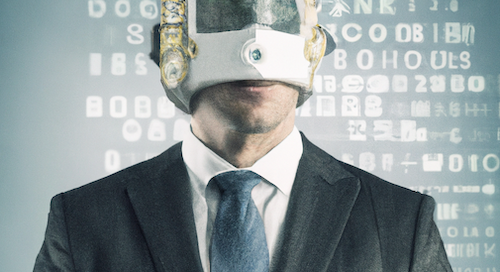
The signs of disembodiment are everywhere.
- A member of congress runs around like a chicken with its head cut off making cackling, nonsensical, and often cruel comments that I would not normally associate with a human being.
- A high-tech billionaire acts suspiciously like an over-endowed robot, making remarks that make me wonder whether, unlike the Tin Man in the Wizard of Oz, the guy really doesn’t have a heart.
- AI bots begin to create news (and art) for us—and they really don’t have hearts.
Our 24-7 culture seems better suited to constantly-turned-on robots than to humans who do better when they live by the rhythms of nature and their bodies.
Many of us need to practice what came naturally to us as children: embodiment. It’s the practice of being fully connected to our bodies and aware of them from the inside out. It includes being able to feel our grounding when a seemingly callous and confusing world swirls around us.

While practices like yoga can support body awareness, many of us need fixes to use when we’re not on the mat. How can we keep feeling like a sentient human during the meeting from hell, the lecture that has gone on way too long, or while listening to congressional debates? Having a few easy-to-use embodiment practices can save the day when we’re stressed or looking for the self-eject button that can save us from being present in this physical reality.
These tips aren’t rocket science. You probably learned them in kindergarten.
- Breathe. Breathing is where embodiment starts because it connects us to the rhythms of our bodies. Plus, if we’re hurting, we can breathe into places in our bodies that are stiff, feel numb, or are thinking about going AWOL.
- Squirm (sway or move). Personal factoid: my first job after college was teaching four and five-year-olds in Ecuador. That’s when I learned that humans were born to squirm. Moving can help remind us we have bodies. Sitting frozen in a chair does not. It’s an adult practice and not always a good one. While I don’t recommend regularly falling off your seat, like my student Paco, when you’re in meetings, you can at least try some gentle swaying to remind your body that it has not been forgotten. Even a bit of movement (including tapping your toes or fingers) is likely to help your nervous system and support your listening.
- Wiggle your toes. Speaking of toes, feeling them can be part of connecting to our feet and feeling grounded on the earth. Did you ever sing the ditty “Heads, fingers, knees and toes (knees and toes!)” (I did to teach English. The song reminds us that we have bodies and it’s good to occasionally check them out. Our toes can be subversive reminders that we are more than a brain. Plus, no one is likely to see you wiggling them in a lecture or when customer service has promised you, for the fortieth time, that they appreciate your wait.

- Touch. Kids sometimes get into trouble for touching too many things—but it’s a great embodiment practice. Run your fingers along the textured skin of the orange you intend to eat. Then feel it with your tongue when you bite into it. (I suspect kids discover the world by licking, too.) Feel the weight of a teacup in your hand. Notice the wrinkles in the seat cushion when you sit down and feel the weight of your butt. What if you could be a kid again, turn off the thinking mind for a moment, and just walk around touching things? Navigating through the senses, like touch, is a great way to feel more present in the body!
- Turn off your eyes.The eyes are a body part we use constantly, yet rarely give proper thanks. Just think of the effort it requires for them to watch sixteen little boxes on Zoom for an hour. Our eyes deserve a break! It’s an amazing feeling to let them rest in their sockets without asking them to do anything. When I shut them I become more aware of them and the stress and fatigue they carry. And because the eyes are always sending info to the brain, an eye break means a brain break as well.
- Sounding. When I lived in Manhattan, people talked to themselves on the street. I could walk down 42nd Street rehearsing lines for a play and no one would bat an eye. Now, when we see people self-talking, we assume they are on their cell phones. Great opportunity! Make more noise as you walk about. Hmmm, tone or sing, or invent weird little noises (coughs, sputters, and sighs) of your own creation. You don’t have to voice these in lecture halls—but when we sound, we vibrate, and our bodies become alive. As feeling those sensations allows us to feel more of what is happening within us.
- Thumping and tapping. Many people use a practice called tapping to help regulate their nervous system—you can check it out here. I also like the practice I call “Thumping” (rights not yet reserved). I beat on both sides of my sternum—no precision required. Thumping wakes me up, supports my endocrine system, stimulates my inner Tarzan.
- Being in nature. Walking on loamy soil or covering my hands in dirt reminds me of my connection with nature—and brings me back to my body. In nature, our eyes can relax while the beauty of the natural world envelops us. Our ears say “thank you” for a few minutes in silence or an opportunity to hear natural sounds like the wind, woodpeckers, or leaves rustling. Our feet enjoy the feel of squishy earth. And when we can’t walk in the woods, something as simple as plunging our hands into dirt or listening to birds chirping can reset our inner dials.
I recently learned (thank you Wayne Mueller) that the word “humility” and the word “human” both come from “humus,” or earth. I wish that the high-tech billionaire mentioned above would go make mud pies and leave the cybersphere alone. Embodiment means being connected to the body of the earth as well as our own. And when we feel that connection, we’re more likely to want to restore the environment.

I love the words of the Buddhist teacher, the late Robert Aitken in his blessing for the environment.
When I stroll around in the city
I vow with all beings
to notice how lichen and grasses
never give up in despair.
When, like children, we connect and delight in our bodies, we also protect ourselves from despair. We remember that, unlike bots, robo-tools, and some billionaires, we have hearts.










3 Responses
Hi Sally,
Beautiful and timely post. I especially love the poem at the end. Have you see All That Breaths yet on HBOMax? You will love how they help us notice all the beings witnessesing our human endeavors. Stay in touch and thanks again for your words!
Thanks so much Doug. I’ll look for All that Breath!
Loved this! I need to remind myself to do these things when I get stressed, especially with book stuff!